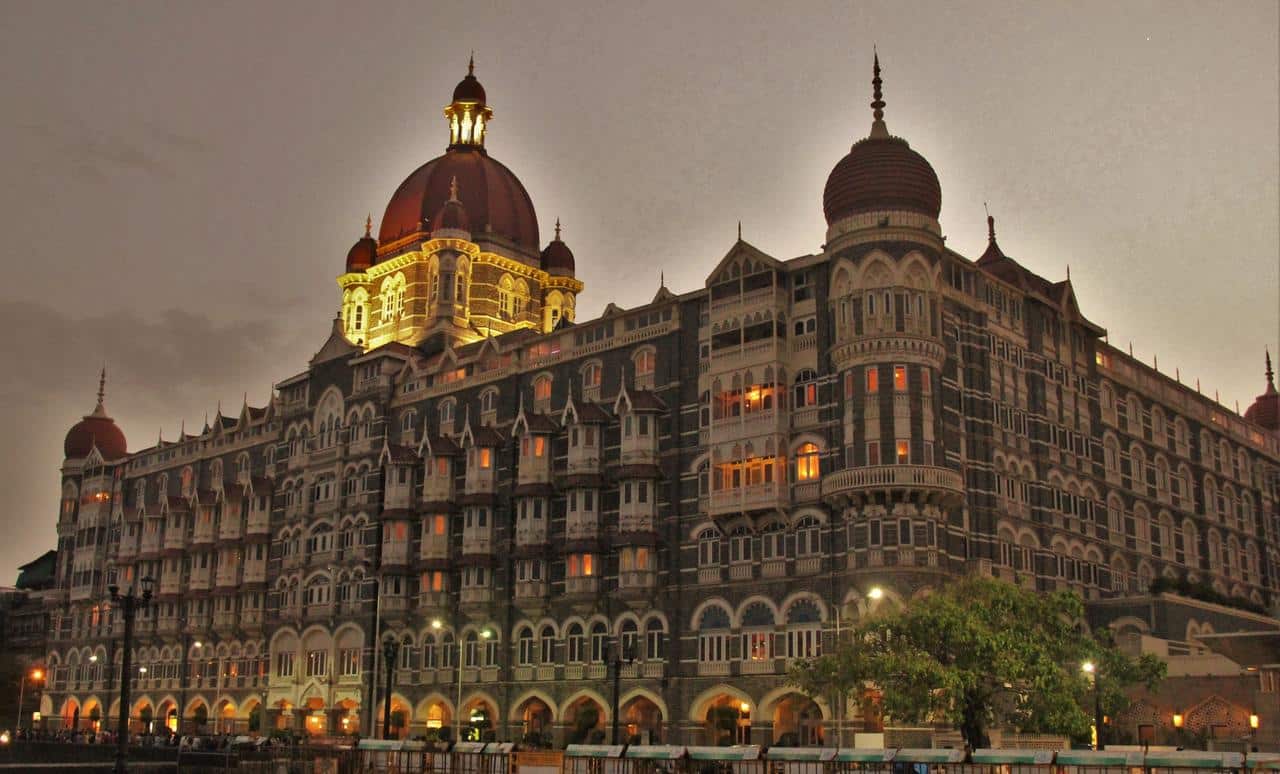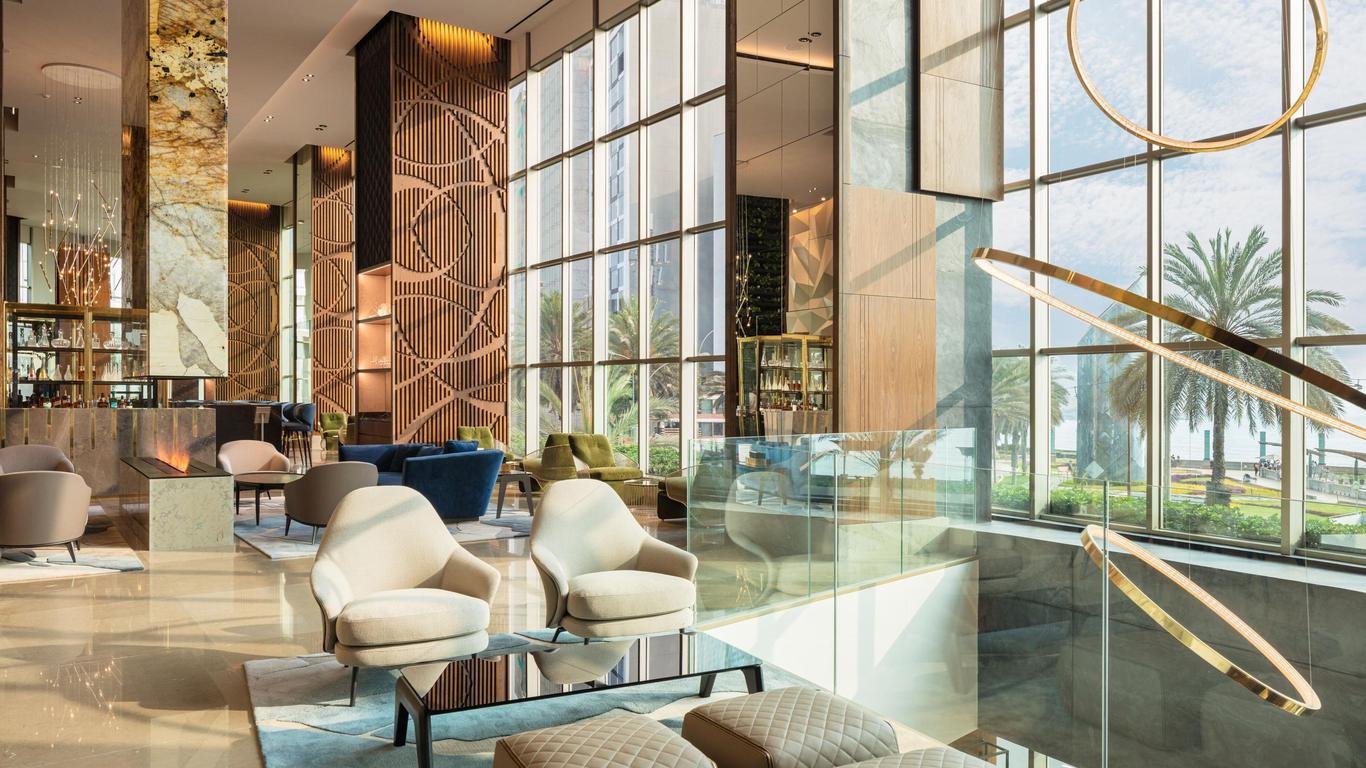[vc_row njt-role=”people-in-the-roles” njt-role-user-roles=”administrator,editor,author,armember”][vc_column][vc_column_text]
India is growing fast. As illustrated by its presidency of the G20 for the coming year, it wants to assert itself on the international scene and become a fully-fledged global producer. This is a promising development for the luxury goods industry, which is already booming.
Huge. India’s population stood at 1.417 billion at the end of last year, according to World Population Review estimates, about 5 million more than China. It could tap into its economic potential, but first it will have to deal with the problems that plague the country : bureaucracy and corruption that have slowed India’s rise and glaring inequalities.
However, it intends to become a leading global producer. The government is spending nearly 20 per cent of its current fiscal year budget on capital investment, the highest level in at least a decade.
All the major powers are facing a slowdown in growth. But India’s Prime Minister Narendra Modi understands the opportunity to become a nation that can propel the global economy. Morgan Stanley predicts that India will account for one-fifth of the world’s expansion this decade. This would make it one of only three countries capable of generating annual output growth in excess of $400 billion. This projection has had an impact on global stock markets. Compared to other emerging countries, Indian stocks have never been higher with India’s Sensex index trading last quarter at the highest in a decade versus the S&P 500 (63250.6 points).
Becoming a global producer
When Prime Minister Modi launched his campaign in 2014, “Make in India”, he wanted to emulate China and East Asian countries. Which had risen to become wealthy economies by filling their factories with workers making products the world wanted to buy. But getting manufacturing to 25 per cent of GDP, a key measure in the program, has proven difficult. To overcome this problem, India, upon inheriting the G20 presidency for 2023, built an external strategy based on multiple alliances. For example, it has increased its purchases of Russian oil 33-fold, despite pressure from Washington…
In a multipolar world, India has thus reinforced its image as a nation “with which it is in everyone’s interest to have good relations”, said Kenneth Juster, former U.S. ambassador to India. “India is positioning itself and using its G20 presidency to build a bridge between east and west and north and south”, he said. “A lot of companies feel that, given its size, given its young population, given its inevitable strength in international business, India is a place where they should be.” Potential GDP growth is estimated to gradually peak at about 8.5 percent early in the next decade, thanks to corporate tax cuts, incentives for manufacturers and privatization of public assets.
Tackling government influence and inequality
To achieve his goal, Modi will have to overcome the legacy of India’s early years as an independent nation, which saw decades of wasted economic opportunity. Since his victory in 2014, the Prime Minister can boast significant progress, particularly in infrastructure. India’s national road network has grown by more than 50 percent, domestic air passenger numbers have nearly doubled, and a massive biometric system has enabled several hundred million people to open bank accounts for the first time. But one of his greatest achievements, supported by his Bharatiya Janata Party, was the creation of a single economic zone from India’s overlapping federal and state taxes. Last year, tax revenue collection jumped 34 per cent over the previous year. The government will present its budget for the next fiscal year on February 1. This streamlining of the Indian economy has led to greater transparency. The government is now reaping double or triple what it did under the previous regime.
To combat corruption and tax evasion, Modi banned almost all local currency bills in 2016. This provoked strong reactions among Indians, many of whom work for daily cash wages. In addition, glaring inequality continues to hamper Indian growth. To take full advantage of the country’s demographics, more wealth needs to be created and high unemployment among women, minorities and youth needs to be addressed. According to one estimate, women’s participation in the labor force has fallen to 9 percent by 2022, in part because of the pandemic. Closing the gender gap – 58 percentage points – could increase India’s GDP by more than 30 percent by 2050, according to an analysis by Bloomberg Economics.
What opportunities for luxury?
The luxury sector is also expected to grow in India by 10% over the next 5 years. It is projected to exceed $200 billion by 2030. In the last two years, only the Indian luxury market has performed better than expected. Similarly, according to a United Nations report from 2020, 18 million people from India are living abroad, significantly impacting industry spending and brand and retailer strategies.
Major new locations have also been announced. Galeries Lafayette announced that it will set up units in Mumbai and Delhi, which will bring together more than 200 luxury and designer brands under one roof. And Houses like Lancôme, Valentino, Burberry, Coach have already set foot in India in previous years, encouraging other Houses to do the same.
So, with strong growth, influence, and national elections scheduled for 2024, the question on the horizon is what India’s economic ambitions will be and how this giant will spend its political capital.
Read also >India: a booming market for luxury
Featured photo : ©Taj Mahal Palace Hotel of Mumbai [/vc_column_text][/vc_column][/vc_row][vc_row njt-role=”not-logged-in”][vc_column][vc_column_text]
India is growing fast. As illustrated by its presidency of the G20 for the coming year, it wants to assert itself on the international scene and become a fully-fledged global producer. This is a promising development for the luxury goods industry, which is already booming.
Huge. India’s population stood at 1.417 billion at the end of last year, according to World Population Review estimates, about 5 million more than China. It could tap into its economic potential, but first it will have to deal with the problems that plague the country : bureaucracy and corruption that have slowed India’s rise and glaring inequalities.
However, it intends to become a leading global producer. The government is spending nearly 20 per cent of its current fiscal year budget on capital investment, the highest level in at least a decade.
All the major powers are facing a slowdown in growth. But India’s Prime Minister Narendra Modi understands the opportunity to become a nation that can propel the global economy. Morgan Stanley predicts that India will account for one-fifth of the world’s expansion this decade. This would make it one of only three countries capable of generating annual output growth in excess of $400 billion. This projection has had an impact on global stock markets. Compared to other emerging countries, Indian stocks have never been higher with India’s Sensex index trading last quarter at the highest in a decade versus the S&P 500 (63250.6 points).
Becoming a global producer
When Prime Minister Modi launched his campaign in 2014, “Make in India”, he wanted to emulate China and East Asian countries. Which had risen to become wealthy economies by filling their factories with workers making products the world wanted to buy. But getting manufacturing to 25 per cent of GDP, a key measure in the program, has proven difficult. To overcome this problem, India, upon inheriting the G20 presidency for 2023, built an external strategy based on multiple alliances. For example, it has increased its purchases of Russian oil 33-fold, despite pressure from Washington…
[…][/vc_column_text][vc_cta h2=”This article is reserved for subscribers.” h2_font_container=”tag:h2|font_size:16|text_align:left” h2_use_theme_fonts=”yes” h4=”Subscribe now !” h4_font_container=”tag:h2|font_size:32|text_align:left|line_height:bas” h4_use_theme_fonts=”yes” txt_align=”center” color=”black” add_button=”right” btn_title=”I SUBSCRIBE !” btn_color=”danger” btn_size=”lg” btn_align=”center” use_custom_fonts_h2=”true” use_custom_fonts_h4=”true” btn_button_block=”true” btn_custom_onclick=”true” btn_link=”url:https%3A%2F%2Ftest2023.luxus-plus.com%2Fen%2Fsubscriptions-and-newsletter-special-offer-valid-until-september-30-2020-2-2%2F”]Get unlimited access to all articles and live a new reading experience, preview contents, exclusive newsletters…
Already have an account ? Please log in.[/vc_cta][vc_column_text]Featured photo : ©Taj Mahal Palace Hotel of Mumbai[/vc_column_text][/vc_column][/vc_row][vc_row njt-role=”people-in-the-roles” njt-role-user-roles=”subscriber,customer”][vc_column][vc_column_text]
India is growing fast. As illustrated by its presidency of the G20 for the coming year, it wants to assert itself on the international scene and become a fully-fledged global producer. This is a promising development for the luxury goods industry, which is already booming.
Huge. India’s population stood at 1.417 billion at the end of last year, according to World Population Review estimates, about 5 million more than China. It could tap into its economic potential, but first it will have to deal with the problems that plague the country : bureaucracy and corruption that have slowed India’s rise and glaring inequalities.
However, it intends to become a leading global producer. The government is spending nearly 20 per cent of its current fiscal year budget on capital investment, the highest level in at least a decade.
All the major powers are facing a slowdown in growth. But India’s Prime Minister Narendra Modi understands the opportunity to become a nation that can propel the global economy. Morgan Stanley predicts that India will account for one-fifth of the world’s expansion this decade. This would make it one of only three countries capable of generating annual output growth in excess of $400 billion. This projection has had an impact on global stock markets. Compared to other emerging countries, Indian stocks have never been higher with India’s Sensex index trading last quarter at the highest in a decade versus the S&P 500 (63250.6 points).
Becoming a global producer
When Prime Minister Modi launched his campaign in 2014, “Make in India”, he wanted to emulate China and East Asian countries. Which had risen to become wealthy economies by filling their factories with workers making products the world wanted to buy. But getting manufacturing to 25 per cent of GDP, a key measure in the program, has proven difficult. To overcome this problem, India, upon inheriting the G20 presidency for 2023, built an external strategy based on multiple alliances. For example, it has increased its purchases of Russian oil 33-fold, despite pressure from Washington…
[…][/vc_column_text][vc_cta h2=”This article is reserved for subscribers.” h2_font_container=”tag:h2|font_size:16|text_align:left” h2_use_theme_fonts=”yes” h4=”Subscribe now !” h4_font_container=”tag:h2|font_size:32|text_align:left|line_height:bas” h4_use_theme_fonts=”yes” txt_align=”center” color=”black” add_button=”right” btn_title=”I SUBSCRIBE !” btn_color=”danger” btn_size=”lg” btn_align=”center” use_custom_fonts_h2=”true” use_custom_fonts_h4=”true” btn_button_block=”true” btn_custom_onclick=”true” btn_link=”url:https%3A%2F%2Ftest2023.luxus-plus.com%2Fen%2Fsubscriptions-and-newsletter-special-offer-valid-until-september-30-2020-2-2%2F”]Get unlimited access to all articles and live a new reading experience, preview contents, exclusive newsletters…
Already have an account ? Please log in.[/vc_cta][vc_column_text]Featured photo : ©Taj Mahal Palace Hotel of Mumbai[/vc_column_text][/vc_column][/vc_row][vc_row njt-role=”people-in-the-roles” njt-role-user-roles=”subscriber,customer”][vc_column][vc_column_text]








